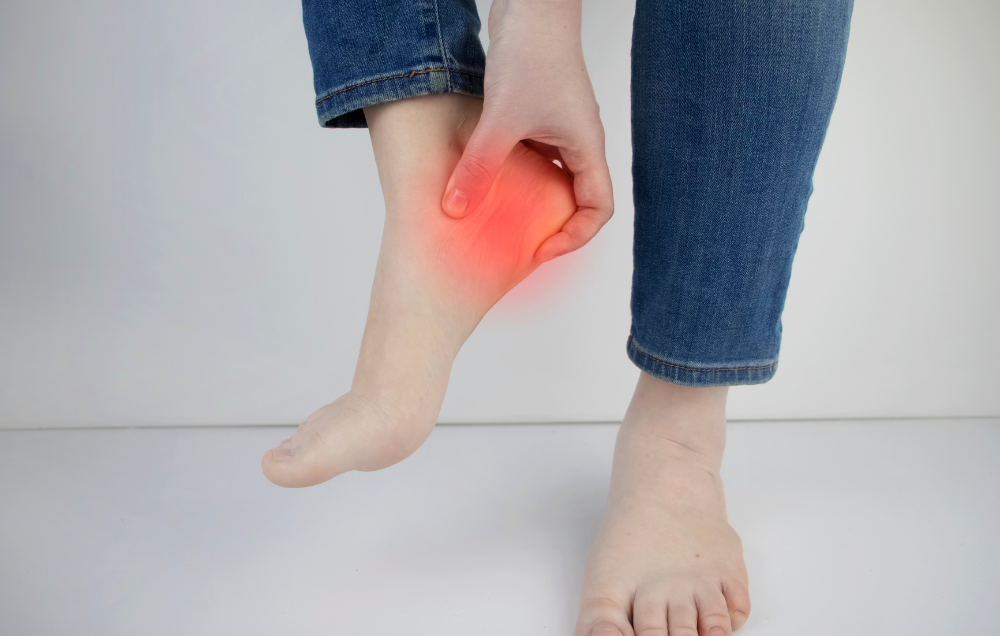Heel bursitis is an often uncomfortable condition characterized by symptoms like foot pain and swelling. Bursitis refers to the inflammation of the bursae, which are small sacs that serve to cushion joints in the body. When these sacs are inflamed, you may experience tenderness and pain in the surrounding region. This condition can affect joints throughout the body, including those in the heel. Inflammation in the feet is often caused by overuse, injury and improper footwear. Heel bursitis affects the bursa that is positioned between your Achilles tendon and your heel bone. This can cause painful symptoms that may spread from the heel into other parts of the foot and ankle. When your bursae become inflamed, it is important to seek treatment.
When it comes to treating heel bursitis, physical therapy can be a great option. A physical therapist can offer a range of treatment methods tailored to your needs and specific condition. In addition to hands-on treatments like manual therapy, your physical therapist will likely prescribe certain exercises. By participating in these exercises, you can work toward substantial progress in your heel’s recovery.
Effective physical therapy exercises for treating heel bursitis
- Calf stretch — Calf stretches can be an excellent way to relieve tension on the Achilles tendon. By targeting the Achilles tendon, you can reduce pressure on the heel and help alleviate your pain. To do calf stretches, stand facing a wall with both hands on its surface. Step back with one foot, keeping both legs straightened. Bend your front knee; then lean forward until you feel a stretching in the calf of your rear leg. Try holding the stretch for 20 to 30 seconds. You can then repeat the exercise, switching sides to stretch both calves.
- Heel raises — Heel raises are a simple exercise that can help build support for the heel by strengthening calf muscles. You can start this exercise by standing straight with your feet hip width apart. Next, slowly raise your heels off the ground as high as you can. See if you can keep just the toes and ball of your feet on the floor. Once you have raised your heels, try to hold the position for a few seconds before lowering again. Your physical therapist may recommend doing heel raises in sets of around 10 to 15 repetitions.
- Plantar fascia stretch — To stretch your plantar fascia, begin sitting down with one leg extended. Next, loop something sturdy and flexible around the ball of your foot that you can hold with a hand on either side. In most cases, people use a towel or a resistance band for this exercise. Once the band is looped around your foot, gently pull it toward your chest. This will flex your foot. Hold the stretch for 20 to 30 seconds before releasing and switching sides. The plantar fascia is a thick band of tissue along the bottom of your foot. This exercise stretches the plantar fascia, which can help reduce heel tension. Keeping your feet flexible can be a great way to manage heel bursitis and help prevent future symptoms.
- Toe raises — Toe raising is another exercise you can do while sitting. To start, keep your feet flat on the floor in front of you. With your heels planted, lift your toes as high as you can comfortably manage. You can hold this position for a few seconds before lowering and repeating. Toe raises may feel like an inverted version of heel raises, but they can help work out other parts of the feet. Toe raises are meant to improve circulation in the foot, which can promote healing and reduce swelling in the heel.
- Eccentric heel drop — Eccentric exercises are exercises that work to lengthen a muscle through contractions. To do eccentric heel drops, begin in a standing position on some kind of ledge. A short stool or stair is ideal. Start with your heels hanging off the step. Slowly lower your heels so that they dip below the step; then raise your heels again. For an effective session, physical therapists often recommend around 10 to 15 repetitions. An eccentric heel drop works to help strengthen the calf muscles. This can help alleviate pressure on the heel bursa, reducing inflammation and pain.
Alleviate your heel bursitis with help from Forever Fit Physical Therapy & Wellness
Ready to learn about more ways to manage your heel bursitis? Forever Fit Physical Therapy & Wellness is here to help. Our team offers a range of innovative treatment methods designed to help you find rapid and lasting relief.
Contact our team today for more information or to schedule an initial appointment.

